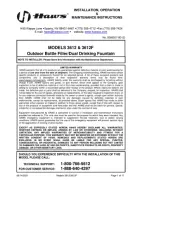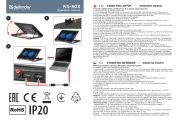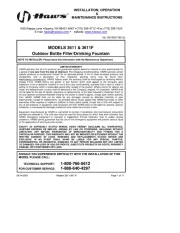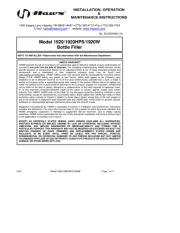Mamiya ZD Handleiding
Bekijk gratis de handleiding van Mamiya ZD (2 pagina’s), behorend tot de categorie Niet gecategoriseerd. Deze gids werd als nuttig beoordeeld door 303 mensen en kreeg gemiddeld 3.7 sterren uit 152 reviews. Heb je een vraag over Mamiya ZD of wil je andere gebruikers van dit product iets vragen? Stel een vraag
Pagina 1/2

NOTE
The memory card (SD memory card or compact flash card) that allows the
storage of photographed images is sold separately.
What’s in the box?
Take the camera and accessories out of the box and check that all items are included.
1
•Eye cup AE301
•Correcting lens standard DE301
•Finder screen type A SA301
•IR Cut filter YB301
•Body front cap KV401
2Names of parts
3Before you begin
1. Attach the provided strap on the hook (2 places) of the camera according to the
diagram.
4Preparing the camera
1. Set the date and time of the camera.
Place the shutter release mode switch lever to S (Single-Frame
Mode) and move the selection key lock lever to the ON position.
Display the menu by pressing the menu button and select
[ ] (Set up menu) using the [ ] of the selection key
and press [ ] on the selection key.
5Taking a photograph
1. Place the shutter release mode switch lever to S (Single-Frame Mode) and move
the focus mode switch “S” (single focus) position.
NOTE
When the charging lamp stops flashing and stays lit, charging is complete.
The first charging session after purchase will be complete in approximately
2 hours.
Mamiya ZD Camera
•Neck strap CN301
•IEEE1394 cable BL301
Lithium ion battery BA701Battery charger DE-975A
Power cord
Mamiya Digital PhotoStudioBS301
(RAW Data development software)
IR Cut filter case Filter replacement guide
Mamiya ZD
Setup Guide (this document)
Mamiya Digital PhotoStudio
User’s Manual
Mamiya ZD
User’s Manual
2. Charge the provided battery.
Connect the power cord into the battery charger and then the power plug to the
outlet. The Power lamp will light.
When the battery is set in the battery charger as shown in the diagram, the charging
lamp will flash and the battery charging will start automatically.
Shutter release mode switch lever Focus mode switch lever
2. Turn the front dial (or rear dial) while pressing the
light adjustment mode button and set to “Average /
partial area automatic switching metering”.
Front dial
Metering mode button
Upper LCD
3. Turn the front dial while pressing the exposure
mode button and set to “P (program mode)”.
Exposure mode button
Front dial
Upper LCD
4. Turn the rear dial while pressing the Image quality selection
button and set the stored image quality to “RAW”.
Screen quality selection button Rear dial
Digital LCD panel
5. Turn the rear dial (or front dial) while pressing
the ISO button and set ISO reception to “50”. ISO button Rear dial
Digital LCD panel
6. Turn the front dial while pressing the white balance
button and set to “AWB” (auto white balance).
7. Hold the camera so that the subject is within the focus frame and press the
shutter release button halfway. Once the focus match mark is lit, fully press
the shutter release button and take the photograph.
6Displaying and deleting images
(Displayed on the LC monitor)
Displaying images
1. Push the monitor button after taking the
photograph.
The most recently photographed image will be
displayed on the LC monitor.
Pressing the shutter release button will automatically
return the camera setting to photography mode.
Deleting images
1. Push the monitor button.
The most recently photographed image will be displayed on the LC monitor.
2. Display the image to be deleted using the [ ] of the selection key.
3. Push the delete button.
4. Using the [ ] of the selection key, select “1 frame” or “All images” and press
the OK button. A message confirming image deletion will be displayed. Select
OK to perform deletion.
Monitor button Delete button
NOTE
Deleted images cannot be displayed again.
White balance button
Front dial
Digital LCD panel
●The reverse side illustrates how to develop the photographed images by
uploading the images onto the computer using the attached “Mamiya Digital
PhotoStudio” photo developing software.
●Please read the following. Reverse side
C u r r e n t 2 0 0 6 / 0 3 / 1 9 1 4 : 4 6
O K : S e t
9 D a t e / T i m e
S e t D a t e / T i m e
S e l e c t
Y e a r 2 0 0 6
M o n t h 3
D a t e 1 9
H o u r 1 4
M i n u t e 4 6
9 D a t e / T i m e
O K
Y e a r 2 0 0 6
M o n t h 3
D a t e 1 9
H o u r 1 4
M i n u t e 4 6
9 D a t e / T i m e
O K
OK button
Selection key lock lever
1 Using the [ ] of the selection key,
select the [9] “Set Date/Time” and
press the OK button.
2 The current time and date will be displayed. Press the OK
button to complete.
3 Set the year using the [ ] of the selection key.
4 Once the year is set, use the [ ] of the selection key in order
to set the month. Set the day/hour/minute accordingly. Press
the OK button to confirm the settings.
2. Insert the separately sold memory card.
Open the memory card slot cover of the camera and firmly insert the memory card as
shown in the diagram. Close the memory card slot cover.
NOTE
The SD memory card and the compact flash card (CF card/MD: Micro drive)
can be used as memory cards. Use a memory card with a capacity of 256
MB or over.
3. Format the inserted memory card.
Display the menu by pressing the menu button and select [ ] (Set up menu)
using the [ ] of the selection key and press [ ] on the selection key.
1 Using the [ ] of the selection key, select the [11] “Format” (card formatting)
and press the OK button.
2 Using the [ ] of the selection key, select the slot with the memory card
inserted (SD card or CF card) and press the OK button.
3 A message confirming formatting will be displayed. Press the OK button. Press
the cancel button in order to cancel formatting. Pressing the cancel button will
direct the screen to step 2.
Charging lamp
Power lamp
Top
Top
Compact flash card
(CF card/MD: Micro drive) slot.
SD memory card slot
0 F o r m a t S D
O K ?
1 1 F o r m a t
O KC a n c e l
F o r m a t
S e l e c t
0 S l o t 1 S D
1 S l o t 2 C F
1 1 F o r m a t
O K
NOTE
All images within the memory card will be deleted when formatted.
4. Remove the camera front cap and lens front/rear
caps.
The body front cap of the camera is removed by turning
the body front cap in the direction of the arrow while
pressing the lens removal button.
5. Attach the lens.
Match the lens attachment index and camera lens
attachment/removal index and turn until a clicking noise
is heard.
Lens removal button
Lens attachment / removal guideline
●This setup guide illustrates how to use this product with the most
basic settings.
●The reverse side illustrates how to develop the photographed
images by uploading the images onto the computer using the
attached photo developing software.
●Refer to the User’s Manual for details.
LCD monitor
ISO button
Screen quality
selection button
Strobe light adjustment and correction
button / Cancel button / Self timer timing
setting button
AE lock button / OK button
Rear dial
White balance button
Digital LCD panel
Selection key
Selection key lock lever
Menu button / Day mode/
night mode switch button
Delete button
Image protect button
Memory card slot cover
Monitor button
Zoom button
Information button
Card access lamp
AE lock
button Mirror Lens removal
button
Focus mode
switch lever
Preview button
Lens attachment / removal guideline
Mirror up
button
Digital dial
lock button
Upper LCD
Auto bracket
mode button
Hot shoe
Exposure
correction button
Eye piece shutter
LCD back light
button
Front dial
Shutter release
button
Shutter release mode
switch lever
Metering
mode button
View
adjustment
knob
Eye cup attachment /
removal lever Exposure mode
button
Support release point
●This s etup guide illus trates how to use this product with the mos t
bas ic settings.
●The revers e side illus trates how to develop the photo graphed
images by uploading the images onto the co mputer us ing the
attached pho to dev eloping s o ftware.
●Refer to the User’
ils.
Mamiy a Digital Camera
User’s Man ual
User’s Man
• Battery charger DE-975A User’s Manual
• Lithium ion battery BA701 User’s Manual
• IR Cut filter/Low Pass filter User’s Manual
English

●This setup guide illustrates how to use this product with the most basic settings.
●This explanation will illustrate how to upload onto the computer and develop the photographed images.
●Refer to the “Mamiya Digital PhotoStudio User’s Manual” for details.
Software section
Installing the software
1
If there are any software applications running in the background (including virus check software), please shut them down.
NOTE
Using Windows
Operating environment of the computer having this program installed.
The following operating environment is recommended for the computer having this
software installed.
OS Windows 2000/Windows XP
CPU Pentium 4 or higher, 2.4 GHz or faster
Memory 1 GB or more
Display
1024 x 768 pixels or more, capable of 24-bit full color
Hard Disk 256 MB or more available disk space
Using Macintosh
Operating environment of the computer having this program installed.
The following operating environment is recommended for the computer having this
software installed.
OS Mac OS X v10.2 and after
CPU Power PC G4 350 MHz or faster
Memory 1 GB or more
Display
Displaying over 16,700,000 colors / 1024x768 and above
Hard Disk 256 MB or more available disk space
1. Start the computer and insert the included
CD-ROM into the CD-ROM drive of the
computer. Double click the [MAMIYA_DP]
icon and then open [SETUP.EXE].
A screen for selecting the language type of the
installed software will be displayed.
2. Select [English] and click on the [OK] button
in order to start the installation.
Continue the install process according to the
messages being displayed on the screen.
NOTE Select [AGREE] when the screen confirming on Terms
of Use [LICENSE AGREEMENT] is displayed. Continue
the install process.
3. Press the [Finish] button when the [Setup
Completed] screen is displayed.
The installed software will be ready for use
once the computer is restarted.
1. Start the computer and insert the included CD-ROM into the CD-ROM drive of
the computer.
2. Double click the [Mamiya Digital
PhotoStudio] icon.
3. The [Install Mamiya Digital PhotoStudio] screen will be displayed. Click the
[Continue] button.
Continue the install process according to the messages being displayed on the
screen.
4. Press the [Close] button when the
“The software was successfully
installed” screen is displayed.
The installed software will be ready for
use once the computer is restarted.
Select [Agree] when the screen confirming Terms of Use is displayed.
Continue the install process.
NOTE
Displaying images
2
The Windows XP screen will be referred to for this explanation.
NOTE
1. Start the computer. Using the card reader, upload the images stored on the
memory card onto the computer.
2. Double click the [Mamiya Digital Photostudio] icon on the desktop and open
the software program. (Double click the [Mamiya Digital PhotoStudio] icon
placed in the designated folder during installation when using the Macintosh
operating system.)
[Mamiya Digital PhotoStudio] (the
start-up screen) window appears.
(Only the toolbar will be displayed on
the Macintosh operating system.)
3. From the [File] menu, select [Open].
The [Open] window appears.
4. Open the folder where the RAW data photograph is stored and select the
image file (RAW data: extension MEF). Click the [Open] button.
The image will be displayed.
3
Adjusting and developing the image
The development process using the “Processing Wizard (Processing Preview Assistant
for the Macintosh version)” will be explained below. Refer to the Mamiya Digital PhotoStudio
User’s Manual for details.
1. From the [Tool] menu, select [Processing Wizard (Developing Parameter Setting
Assistant on the Macintosh version)].
The [White Balance] screen of the [Processing Wizard] screen.
Double click
[Shot Setting], [WB mode], [Color
Temperature], [Mired], and [File]
can be set accordingly on the [White Balance]
screen.
NOTE
2. Click [Next] after setting the [White Balance] settings and set the [Exposure
Compensation].
The upper level will display the pre-adjustment and post-adjustment
images in the [Processing Wizard].
The lower level will display the image variation according to the adjusted rates.
The adjustment rate can be set by selecting on the desired image in the lower level.
Clicking on the left and right images on the lower level will display the image in the
center, and will be referred to as a post-adjusted image.
NOTE
Exposure correction can be set
using the adjustment width setting
using the adjustment width slider on the
[Exposure Compensation] screen. Clicking on
the right hand image will adjust in the +
direction and clicking on the left hand image
will adjust in the - direction.
NOTE
3. Click [Next] after setting the [Exposure Compensation] settings and set the
[Tone].
4. Click [Next] after setting the [Tone] settings and set the [Saturation].
5. Click [Next] after setting the [Color] settings and set the [Color Balance].
6. Click [Next] after setting the [Color Balance] settings and set the [Sharpness/
Noise Reduction/Lens Correction].
Adjustable Range slider
Adjustable Range slider
7. Press the [Save] button after the [Sharpness/Noise Reduction/Lens Corretion]
settings are complete.
This will end the setting process using the [Processing Wizard].
8. Select [Processing Options] from the [Settings] menu.
The [Processing Options] window appears.
9. Set [Output format], [Color Space], and [Save Destination] on the [Processing
Options] window.
10
.Click [Process] icon on the Tool Pallet.
Each of the Red, Green, and Blue
Color balances can be using the
adjustment width set on the adjustment width
slider on the [Color Balance] screen. Clicking
on the right hand image will adjust in the +
direction and clicking on the left hand image
will adjust in the - direction.
NOTE
On the [Saturation] screen, clicking
on the right hand image will adjust
in the [High] direction and clicking on the left
hand image will adjust in the [Low] direction.
NOTE
On the [Tone] screen, clicking on
the right hand image will adjust in
the [Medium High] direction and clicking on the
left hand image will adjust in the [Medium Low]
direction.
Placing a check mark on [File] will use a
previously saved adjustment file for
adjustment.
NOTE
●By using [Output format], you can select the file format to be output from
the three types of [Exif-JPEG], [Exif-TIFF(8bit)], or [TIFF(16bit)].
●By using [Color Space], you can select the applicable color space from the two types
of [sRBG] or [AdobeRBG].
●By using [Save Destination], you can set the save location of developed pictures.
NOTE
Software Functions
This software has the following five functions. Refer to the User’s
Manual for details.
(1) Browsing
This is a function that allows the user to display raw images
taken and developed image data on a computer. Thumbnail
display and Preview display are possible.
Thumbnail
This is a function that allows the users to list taken images and
developed image data at a reduced size.
Preview
This is a function that displays a preview of the output image
of taken images and developed image data.
Displaying Image Information
This is a function that allows the user to view the file name, file
size, and various other settings of the image taken.
(2) Retouching (editing) function
Overall adjustments and individual adjustments can be carried
out through the Wizard Format (consists of answering the
questions posed by the system allowing easy overall
adjustment).
(3) Developing
This is a function that allows the user to modify image white
balance, color balance and exposure correction to develop the
image.
(4) Output
This is a function that allows the user to output developed
images from a printer or image setter.
(5) Capture Function
This is a function that allows the user to take images by
controlling the aperture and shutter speed of a camera from a
computer when the camera is connected to a computer which
has the software installed.
Strength of sharpness can be
adjusted with the slider of
[Sharpness] appearing on the [Sharpness/Noise
Reduction/Lens Corretion] screen.
Strength or width of eliminating noise can be
adjusted with the slider of [Noise Reduction].
In the [Lens Corretion] screen, you can select
[Vignetting Reduction] and [Distortion
Correction].
If you put a checkmark next to [File] for each
parameter, various corrections can be made by
using the set adjustment files.
NOTE
DCSG0606EN02 Printed in Japan
Product specificaties
| Merk: | Mamiya |
| Categorie: | Niet gecategoriseerd |
| Model: | ZD |
Heb je hulp nodig?
Als je hulp nodig hebt met Mamiya ZD stel dan hieronder een vraag en andere gebruikers zullen je antwoorden
Handleiding Niet gecategoriseerd Mamiya

11 Juni 2023

9 Juni 2023

7 Juni 2023

4 Juni 2023

1 Juni 2023

30 Mei 2023

24 Mei 2023

20 Mei 2023
Handleiding Niet gecategoriseerd
- Absco
- FXLab
- Sol Expert
- Zoetis
- Kranzle
- Transcend
- Tommee Tippee
- Youin
- Davey
- Kingston Technology
- MTD
- AvaTime
- Tzumi
- Dexibell
- Uniden
Nieuwste handleidingen voor Niet gecategoriseerd

17 September 2025

17 September 2025

17 September 2025

17 September 2025

17 September 2025

17 September 2025

17 September 2025

17 September 2025

17 September 2025

17 September 2025